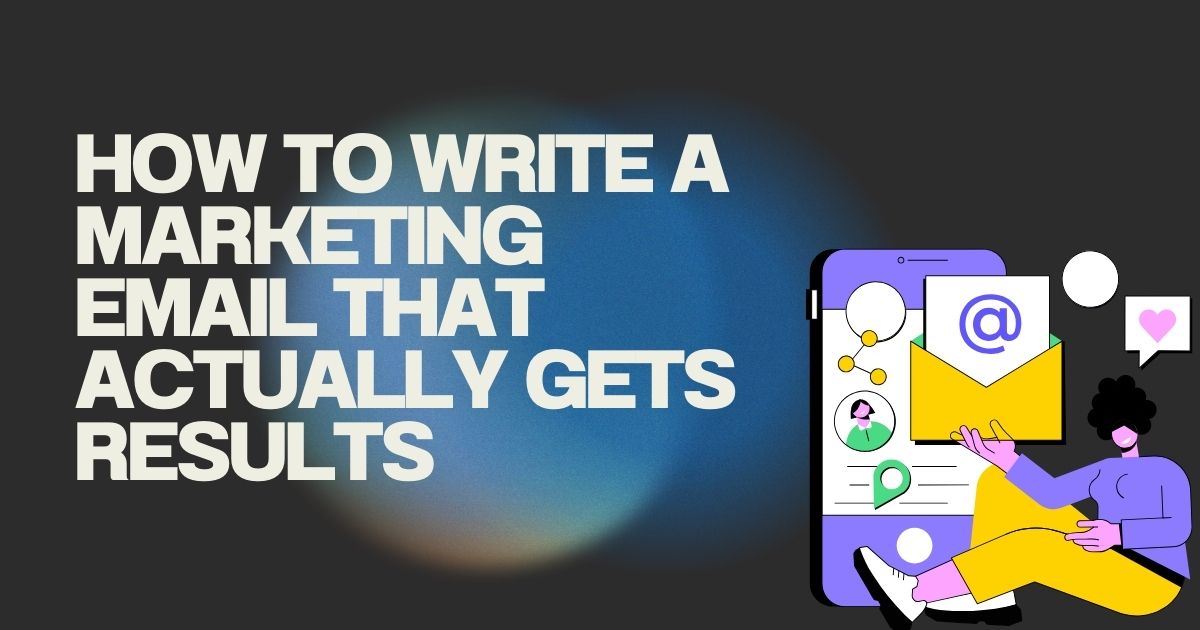
Marketing emails often end up in spam folders or get deleted within seconds of being opened. With the average person receiving 121 emails per day, your message needs to cut through the noise and deliver real value. The difference between a successful email campaign and a failed one often comes down to mastering the fundamentals of effective email writing.
This guide will walk you through the essential elements of crafting marketing emails that engage your audience, drive action, and build lasting customer relationships. From subject lines that demand attention to calls-to-action that convert, you’ll learn the proven strategies that turn ordinary emails into powerful marketing tools.
Understanding Your Email’s Purpose

Before writing a single word, you need to define exactly what you want your email to achieve. Marketing emails serve different purposes, and your approach should match your specific goal.
Lead Nurturing Emails
These emails guide potential customers through your sales funnel by providing valuable information, addressing common concerns, and building trust over time. Lead-nurturing emails focus on education rather than direct selling, positioning your brand as a helpful resource.
Promotional Emails
Direct sales emails announce new products, special offers, or time-sensitive deals. These messages should create urgency while clearly communicating the value proposition and benefits to the customer.
Relationship Building Emails
These emails maintain ongoing communication with existing customers, sharing company updates, industry insights, or behind-the-scenes content. They keep your brand top-of-mind and strengthen customer loyalty.
Re-engagement Emails
Designed to reconnect with inactive subscribers, these emails often include special offers, surveys, or content designed to reignite interest in your brand.
Crafting Subject Lines That Get Opened
Your subject line determines whether your email gets opened or ignored. It’s your first—and sometimes only—chance to grab attention in a crowded inbox.
The Power of Curiosity
Questions, incomplete thoughts, and intriguing statements make readers want to learn more. Subject lines like “The mistake 90% of marketers make” or “Why your competitors are scared” create curiosity gaps that readers feel compelled to fill.
Urgency and Scarcity
Time-sensitive language motivates immediate action. Phrases like “24 hours left,” “limited spots available,” or “ends tonight” tap into the fear of missing out. However, use these tactics sparingly—overuse diminishes their effectiveness and can damage trust.
Personalization and Relevance
Including the recipient’s name, location, or interests makes emails feel more personal and relevant. “John, your local gym membership expires soon” performs better than generic alternatives. Use your customer data to create targeted subject lines that speak directly to individual needs.
Testing and Optimization
A/B testing different subject lines reveals what resonates with your specific audience. Test variables like length, tone, personalization, and urgency to identify patterns that improve open rates.
Writing Compelling Email Content
Once your email is opened, the content must deliver on the promise made in your subject line while guiding readers toward your desired action.
Start Strong With Your Opening
Your first sentence should hook readers immediately. Skip lengthy introductions and get straight to the point. Start with a compelling statistic, provocative question, or statement that directly addresses your reader’s needs or pain points.
Focus on Benefits, Not Features
Readers care about what your product or service will do for them, not its technical specifications. Instead of listing features, explain how those features solve problems or improve people’s lives. Transform “Our software has advanced analytics” into “Track exactly which marketing efforts bring you the most customers.”
Use Clear, Conversational Language
Write as if you’re speaking to a friend. Avoid jargon, complex sentences, and corporate speak. Short paragraphs, bullet points, and simple language make your content easy to scan and understand.
Tell Stories When Appropriate
People connect with stories more than abstract concepts. Customer success stories, case studies, or even brief anecdotes can make your message more engaging and memorable. Stories provide social proof while demonstrating real-world applications of your solutions.
Address Objections Proactively
Anticipate common concerns or hesitations your readers might have and address them directly in your email. This removes barriers to action and demonstrates that you understand your audience’s perspective.
Designing for Mobile Readers
Over 60% of emails are opened on mobile devices, making mobile optimization crucial for success. Your email needs to look good and function well on small screens.
Keep It Concise
Mobile users have limited attention spans and small screens. Get to your main point quickly and keep your overall message brief. Long paragraphs become overwhelming on mobile devices.
Use Single-Column Layouts
Complex layouts with multiple columns don’t translate well to mobile screens. Stick to single-column designs that stack elements vertically and maintain readability across all devices.
Make Buttons Thumb-Friendly
Ensure your call-to-action buttons are large enough to tap easily on touchscreens. Buttons should be at least 44 pixels tall and have adequate spacing around them to prevent accidental taps.
Test Across Devices
Preview your emails on different devices and email clients before sending. What looks perfect on your computer might be unreadable on a smartphone.
Creating Irresistible Calls-to-Action
Your call-to-action (CTA) is where interest converts to action. Every element of your email should guide readers toward this crucial moment.
Use Action-Oriented Language
Your CTA should clearly state what happens when it is clicked. Instead of generic phrases like “Click here” or “Learn more,” use specific language like “Download your free guide,” “Start your trial today,” or “Get your discount now.”
Create Visual Prominence
Your CTA button should stand out visually from the rest of your content. Use contrasting colors, adequate white space, and appropriate sizing to draw attention to your desired action.
Limit Options
Too many choices paralyze readers. Include one primary CTA per email, with secondary actions only when absolutely necessary. Multiple competing CTAs dilute focus and reduce overall conversion rates.
Position Strategically
Place your primary CTA above the fold when possible, but also consider including it again at the end of your email for readers who scroll through all your content.
Personalization and Segmentation
Generic mass emails perform poorly compared to targeted, personalized messages. Use your customer data to create relevant, timely communications.
Segment Your Audience
Divide your email list based on demographics, purchase history, engagement levels, or other relevant criteria. A new subscriber needs different content from a long-term customer, and your emails should reflect these differences.
Dynamic Content
Use dynamic content blocks to show different information to different segments within the same email template. This allows for personalization at scale while maintaining efficiency.
Behavioral Triggers
Set up automated emails based on specific actions or behaviors. Welcome new subscribers, follow up on abandoned carts, or re-engage inactive customers with targeted messages triggered by their actions.
Avoiding Common Pitfalls
Even well-intentioned marketing emails can fail due to common mistakes that damage deliverability and engagement.
Spam Trigger Words
Certain words and phrases trigger spam filters and reduce deliverability. Avoid excessive use of words like “free,” “urgent,” “act now,” or “guaranteed.” Focus on natural language that provides value rather than pushy sales speak.
Overwhelming Frequency
Sending too many emails annoys subscribers and increases unsubscribe rates. Find the right balance for your audience through testing and monitoring engagement metrics.
Neglecting List Hygiene
Regularly clean your email list by removing inactive subscribers, invalid addresses, and those who haven’t engaged in months. A smaller, engaged list performs better than a large, unresponsive one.
Ignoring Analytics
Monitor key metrics like open rates, click-through rates, and conversion rates to understand what works and what doesn’t. Use this data to continuously improve your email strategy.
Building Trust Through Crisis Communication
When mistakes happen—and they will—how you handle them can actually strengthen customer relationships. Taking inspiration from crisis management principles, effective marketing emails should always prioritize transparency and accountability.
If you send an email with errors, address them quickly and directly. If you make promises you can’t keep, acknowledge the issue and explain your solution. Customers appreciate honesty and are more likely to forgive mistakes when handled transparently.
Measuring Success and Continuous Improvement
Successful email marketing requires ongoing optimization based on real performance data. Track metrics that align with your goals and use insights to refine your approach.
Key Performance Indicators
Monitor open rates to gauge subject line effectiveness, click-through rates to measure content engagement, and conversion rates to assess overall campaign success. Track unsubscribe rates to ensure you’re not overwhelming your audience.
A/B Testing Strategy

Test one element at a time to isolate what drives improved performance. Test subject lines, send times, content length, CTA placement, and personalization levels to optimize your campaigns systematically.
Long-Term Relationship Building
Focus on building long-term customer relationships rather than just immediate sales. Provide consistent value, maintain regular communication, and adapt your strategy based on customer feedback and changing needs.
Turning Email Into Your Most Powerful Marketing Channel
Marketing emails that get results combine strategic thinking with tactical execution. By understanding your audience, crafting compelling content, and continuously optimizing based on performance data, you can transform email from a necessary evil into your most effective marketing tool.
Start by auditing your current email strategy against the principles outlined in this guide. Identify areas for improvement, test new approaches, and measure results consistently. Remember that effective email marketing is about building relationships, not just making sales. When you focus on providing genuine value to your subscribers, the results will follow naturally.
The most successful marketers treat every email as an opportunity to strengthen customer relationships while achieving business objectives. Master these fundamentals, and you’ll create email campaigns that your audience actually wants to receive and engage with.


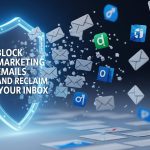

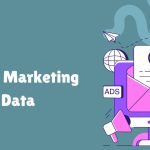
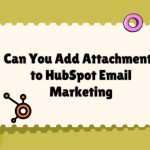

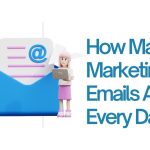

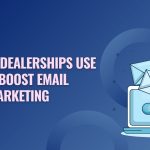




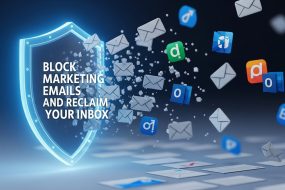
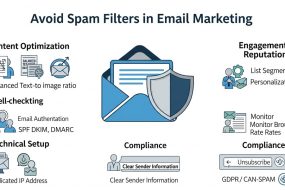
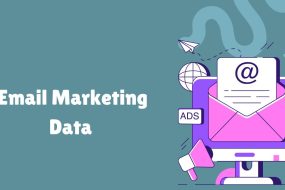
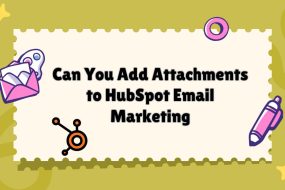
No Comments